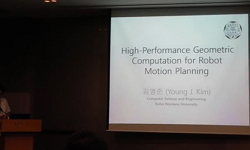<P><B>Abstract</B></P> <P>Glutaric acid is one of the promising C5 platform compounds in the biochemical industry. It can be produced chemically, through the ring-opening of butyrolactone followed by hydrolysis. Alternat...
http://chineseinput.net/에서 pinyin(병음)방식으로 중국어를 변환할 수 있습니다.
변환된 중국어를 복사하여 사용하시면 됩니다.
- 中文 을 입력하시려면 zhongwen을 입력하시고 space를누르시면됩니다.
- 北京 을 입력하시려면 beijing을 입력하시고 space를 누르시면 됩니다.


Production of glutaric acid from 5-aminovaleric acid using <i>Escherichia coli</i> whole cell bio-catalyst overexpressing GabTD from <i>Bacillus subtilis</i>
한글로보기https://www.riss.kr/link?id=A107705040
- 저자
- 발행기관
- 학술지명
- 권호사항
-
발행연도
2018
-
작성언어
-
- 주제어
-
등재정보
SCOPUS,SCIE
-
자료형태
학술저널
-
수록면
57-65(9쪽)
- 제공처
-
0
상세조회 -
0
다운로드
부가정보
다국어 초록 (Multilingual Abstract)
<P><B>Abstract</B></P> <P>Glutaric acid is one of the promising C5 platform compounds in the biochemical industry. It can be produced chemically, through the ring-opening of butyrolactone followed by hydrolysis. Alternatively, glutaric acid can be produced via lysine degradation pathways by microorganisms. In microorganisms, the overexpression of enzymes involved in this pathway from <I>E. coli</I> and <I>C. glutamicum</I> has resulted in high accumulation of 5-aminovaleric acid. However, the conversion from 5-aminovaleric acid to glutaric acid has resulted in a relatively low conversion yield for unknown reasons. In this study, as a solution to improve the production of glutaric acid, we introduced <I>gabTD</I> genes from <I>B. subtilis</I> to <I>E. coli</I> for a whole cell biocatalytic approach. This approach enabled us to determine the effect of co-factors on reaction and to achieve a high conversion yield from 5-aminovaleric acid at the optimized reaction condition. Optimization of whole cell reaction by different plasmids, pH, temperature, substrate concentration, and cofactor concentration achieved full conversion with 100 mM of 5-aminovaleric acid to glutaric acid. Nicotinamide adenine dinucleotide phosphate (NAD(P)<SUP>+</SUP>) and α-ketoglutaric acid were found to be critical factors in the enhancement of conversion in selected conditions. Whole cell reaction with a higher concentration of substrates gave 141 mM of glutaric acid from 300 mM 5-aminovaleric acid, 150 mM α-ketoglutaric acid, and 60 mM NAD<SUP>+</SUP> at 30 °C, with a pH of 8.5 within 24 h (47.1% and 94.2% of conversion based on 5-aminovaleric acid and α-ketoglutaric acid, respectively). The whole cell biocatalyst was recycled 5 times with the addition of substrates; this enabled the accumulation of extra glutaric acid.</P> <P><B>Highlights</B></P> <P> <UL> <LI> The first <I>E. coli</I> whole cell bioconversion from 5-aminovalerate to glutaric acid. </LI> <LI> Finding of critical factors for GabTD reaction. </LI> <LI> Achievement of high bioconversion rate over 90% based on α-ketoglutarate concentration. </LI> <LI> Repetitive use of whole cell biocatalyst to accumulate more glutaric acid. </LI> </UL> </P>
동일학술지(권/호) 다른 논문
-
Mutational analyses for product specificity of YjiC towards α-mangostin mono-glucoside
- Elsevier
- Kim, Tae-Su
- 2018
- SCOPUS,SCIE




 ScienceON
ScienceON






